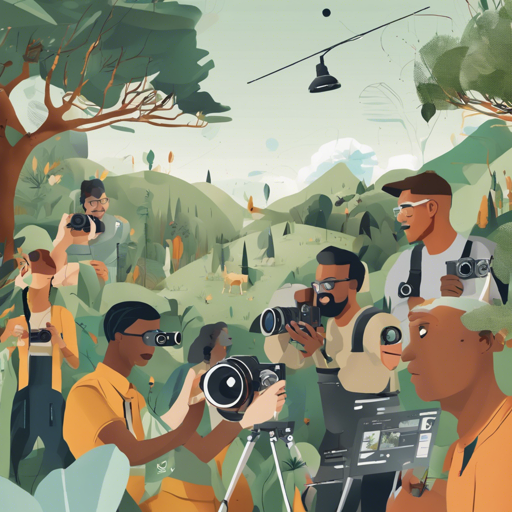SPEC is an advanced camera-aware human body pose and shape estimation method that predicts camera parameters and SMPL body model parameters from images. This blog post will guide you step-by-step on how to implement SPEC for your projects.
Features of SPEC
- Camera-aware human body pose and shape estimation.
- Predicts camera parameters using CamCalib.
- Demonstrates state-of-the-art results in SPEC-SYN and SPEC-MTP datasets.
- Includes demo code implemented in PyTorch.
- Provides comprehensive evaluation methods for datasets.
Getting Started
The SPEC project can be set up on Ubuntu 18.04 using Python 3.7. If you do not have access to a suitable device, you can utilize the Colab demo.
Step 1: Clone the Repository
You will need to clone the SPEC repository into your local environment. Use the following git command:
git clone https://github.com/mkocabas/SPEC.gitStep 2: Install Requirements
Install the necessary requirements using either virtualenv or conda:
# For pip
source scripts/install_pip.sh
# For conda
source scripts/install_conda.shStep 3: Download Required Data
Before running the demo, download the trained model and SMPL model parameters, which is approximately 1GB:
source scripts/prepare_data.shStep 4: Running the Demo
Once you have set everything up, you can run the SPEC demo using:
python scripts/spec_demo.py --image_folder data/sample_images --output_folder logs/spec/sample_imagesThe demo will output visualizations including the horizon line and the ground plane for considering global translations.
CamCalib Demo
If you are primarily focused on estimating camera parameters, run the CamCalib demo as follows:
python scripts/camcalib_demo.py --img_folder input_image_folder --out_folder output_folder --showThis will generate a pickle file containing the predicted camera parameters for each image along with a visual output.
Understanding the Code: An Analogy
Think of the SPEC library as a curious photographer on a journey. The photographer not only takes pictures of people but also measures the environment around them, capturing the angles of the camera, the height of their subjects, and the distance they are positioned at.
In the code, the git clone command is akin to sending our photographer to gather all necessary tools and equipment from a central supply, which is the repository. Installing the requirements is like making sure the photographer has the right lens and gear for different shooting conditions. Downloading the data file is similar to ensuring that our photographer has the right location details and maps before they start shooting. Finally, running the demos can be compared to the act of photography itself, where the photographer captures the scenes and images creatively.
Troubleshooting
If you encounter issues during setup or while running the demos, consider the following troubleshooting tips:
- Ensure that you have the correct Python version installed (Python 3.7).
- Check that all required packages were installed without errors.
- Confirm that your system meets the necessary specifications to run the models.
If the issues persist, feel free to reach out for help, and for more insights, updates, or to collaborate on AI development projects, stay connected with fxis.ai.
Conclusion
SPEC is a powerful tool for human pose estimation and can be utilized in various AI projects. By following the steps outlined in this guide, you’ll be well on your way to harnessing the capabilities of this method for your own applications.
At fxis.ai, we believe that such advancements are crucial for the future of AI, as they enable more comprehensive and effective solutions. Our team is continually exploring new methodologies to push the envelope in artificial intelligence, ensuring that our clients benefit from the latest technological innovations.

